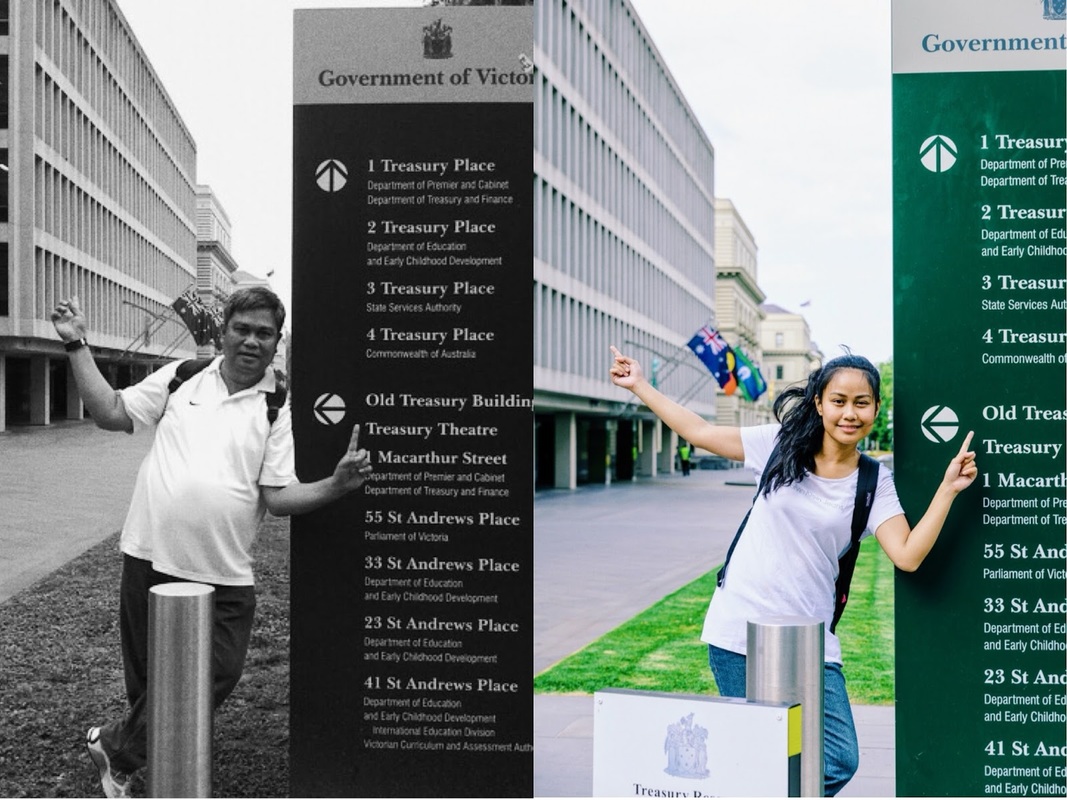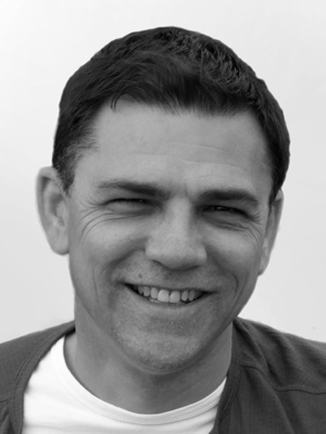His passing is like this one folder of gloom and mourning, and I have learned to keep the folder inside a drawer all the way on the back in my heart and I have learned not to visit the drawer often. But just recently, I realized I have never got the time to let my dad's passing to sink in and I never paid tribute to him properly. So I decided to pay a visit to the back and opened the drawer and pulled out few memories of my dad.
source Chrisya on goodlcuksarah.com and boredpanda.com
After her dad died 3 years ago, Chrisya realised she had never allowed his death to really sink in, and so she decided before leaving Melbourne, a place which held a special significance for them both, to re-create the photographs he had taken.  Chrisya reconnects with her Dad's passing in a unique way Chrisya reconnects with her Dad's passing in a unique wayimage reproduced with kind permission GOODLCUKSARAH.COM More of Chrisya's photos can be found on her blog Chrisya's article brings up two themes about bereavement. One is 'letting go' and the other is 're-connection'. Grief as 'letting go'
This idea of 'letting go', along with related ideas such as 'moving on' and 'getting over it' have their roots in early psychoanalysis, which still has a hold over much of our thinking about bereavement. Freud theorised that,
Mourning has a quite precise psychical task to perform: its function is to detach the survivor's hopes and memories from the dead. Source Freud (1913) Totem and taboo For Freud, mourning involved detaching or 'letting go' the bereaved's love and affection and re-attaching, by re-investing the energy in someone or something else. After someone close to us has died, we often experience intense feelings of sadness. It is only natural to want to feel less sad, however as Freud realised, the feeling of sadness is tied up in our attachment to the person who has died. He believed that healthy grieving meant 'letting go' of this feeling. For most people the initial intense feelings of sadness, do tend to diminish in intensity and frequency as time passes. Most people however, will continue to have feelings of sadness, longing, and loss, when they remember the person who died. For some people the intensity and frequency never really diminishes and will last a lifetime. This kind of experience is common in people who have lost a child, or a life-long partner. Freud, himself, had this reaction after his own daughter died, which he describes in a condolence letter to a friend whose son had recently died. Grief as reconnection
Klass, Silverman, and Nickman's ground breaking book Continuing Bonds was published in 1996. Up until this point the main writing and research on bereavement had been around so called 'abnormal' grief. In Continuing Bonds the authors studied normal grieving across different cultures.
Far from detachment being the norm, peoples from around the world sought to maintain a relationship with the dead. And you can see evidence of this by visiting your local graveyard. Whenever I have walked through one, I will often pause at the grave stones with a little vase of flowers at their base and read the inscriptions. To me the neatly tended flowers signify moments of re-connection with the person who died. Grief as 're-connection' re-defines sadness from being a feeling we detach from to an understanding that sadness is the continuation of love.
Grief rather than being moving on, or letting go, usually involves adding something back in, which is often temporarily lost following the death of someone close to us.
The most frequent thing we are left with in the aftermath are memories of the moments leading up to and around the person's death. The memories we have of them when they were alive, get pushed to one side. People will often say to me, they want to be able to remember the person they knew before they died, and not be stuck with just the memories leading up to their death. Helping people to remember the person they love is one of the most common things I do when helping people who have been bereaved. This process of 're-connection' does not make us less sad. What it does is to add back in the other feelings we have about the person we love. Our grief becomes more bearable, and there is often a sense of feeling more whole, as we re-connect to the person we love. Often when we talk about 'letting go' what we really mean is letting go of the intense sadness, and allowing back in our other feelings associated with our attachment to the person who died. In a sense Freud was correct when he said that grieving involves re-investing our energy. As we process our grief, we do find we are able to invest our energy in things other than feelings of sadness. I think however this happens not because we detach from the person we love, but because as Chrisya so beautifully puts it, I want to let his passing sink in within me and just let it be 6 ways to re-connect
A personal reflection
My own experience of grief after my mother died took little account of Freud's ideas.
My mother was the first person I felt unconditional love for. She raised me with love as well as care, and like Chrisya with her dad, she is a part of me. I can no more detach from my feelings and memories of her, than I can detach from my arm. I do not want to re-attach my feelings for her to someone or something else. She can never be replaced. My process of recovery, like many other people the world over, was to re-connect with the memories and feelings of the person I loved when she was alive. I am who I am, because of my relationships with the people I love. My mother forms, and she always will, a part of that rich tapestry.
I would also like to extend my thanks to Sarah Chrisya for her input in helping me write this article
main picture by Evan Earwicker
2 Comments
20/4/2017 02:44:16 pm
A helpful article. Grief and loss was not part of my studies so I found it particularly interesting, especially having lost a much loved stepson a few months ago.
Reply
20/4/2017 02:52:59 pm
I am glad you found my article useful, and I hope you found something in it which helps with your journey,
Reply
Leave a Reply. |
Categories
All
Archives
January 2021
|
BioI'm Mark, a Humanistic Counsellor. |
Home - Testimonials - Articles - Links - Contact - Book Appointment - Counselling Students - Privacy Policy - Terms
Mark Redwood, BA (Hons) Counselling, MBACP
© Mark Redwood 2015, 2016.2017 | Main portrait by Doug Freegard © 2015


 RSS Feed
RSS Feed